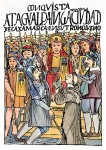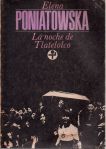How to write about narco? What use is literature in the face of violence and terror? This is, ultimately, the question that narconarratives have to confront. Like it or not, they face much the same challenge as that posed famously by Theodor Adorno in the wake of the Holocaust: “To write poetry after Auschwitz is barbaric.” Is there not something similarly barbaric about continuing to write novels during, let alone about, our current narco epoch? The danger is, as Mexican critic Rafael Lemus puts it, that “novels about narco fulfill a repellent function: they sedate us, they provide consolation. By providing order to disorder, they lessen its impact. By novelizing the narco, they make it seems domesticable” (“Balas de salva” 41). What is more, the writers of narconarrative also stand to profit from the violence they describe. As Lemus trenchantly argues of such authors: “None of these authors engage in denunciation because none of them wants narcoculture to come to an end. It is what feeds their novels, it is what their imaginary depends upon” (42). But is the alternative then silence?
Like Rascón Banda’s Contrabando, Fernando Vallejo’s La virgen de los sicarios has as its protagonist a writer. He is, apparently, a grammarian but in effect what he is writing is the novel that we are reading, told in first person with many an address to the reader, mostly explanations of the idiosyncratic language of Colombia and, in particular, of Medellín during the time of the sicarios (paid assassins) in the aftermath of drug king-pin Pablo Escobar’s death. With Escobar’s organization in disarray (though Vallejo is not particularly interested in how it functions; in fact, he tells us little if anything about the drug trade at all), the dozens, perhaps hundreds, of young men who once killed on its behalf are let loose, purposeless and all the more dangerous for it. If their murders once had some sort of rationale, directed by their superiors further up the narco hierarchy, now they are free to kill for the pettiest of reasons: they see a pair of baseball boots they like; a taxi driver refuses to turn down the volume of his radio; a passer-by rubs them up the wrong way. Vallejo’s narrative is studded with these almost meaningless executions, which go absolutely unpunished by a state that has lost control of the city.
Early on, Vallejo (or rather his narrator, who also goes by the first name Fernando) addresses the issue of how to understand what is in these young men’s minds, in a comment on what draws them to the historic churches that crowd Medellín’s historic city center: “Sociologists say,” he tells us, “that the hitmen ask María Auxiliadora to make sure they don’t miss, that she guide their aim when they shoot and that the deal works out well for them” (11 [15-16]). But the narrator immediately draws back from such rationalization: “And how do they know this? Are they Dostoyevsky or God the Father maybe when it comes to getting inside other people’s minds? A person doesn’t know what he’s thinking himself, so how’s he going to know what other people are thinking!” (12 [16]). Fathoming the sicario mentality requires either divine omniscience or a novelist’s imagination.
Is then this novel a Dostoyevskian exploration of the mind of an assassin? Yes and no. No, in so far as it never directly provides us with the sicario’s perspective: with the narrator we are perpetually by the side of the killers (his two boyfriends: first Alexis, then Wílmar), looking on and reacting to their actions, if from very close by. Fernando consistently marks his distance from them: they are young and he is old; they delight in the pleasures of mass consumption and popular culture, he is austere and has cultivated tastes; they come from the impoverished barrios (the comunas) that surround and overlook the city, which he has never visited. And yet yes, in that this presumption of distance and difference soon breaks down: the narrator harbors his murderous urges, too, and often his sicario boyfriends simply kill on his behalf, indulging his whims, hoping to please him; it turns out (despite his sporadic denials) that his is the mind of a killer, even if his is not the finger on the trigger. It is often as though the sicarios merely act out his fantasies; in the absence of any other direction, he ends up providing it for them. Though he carefully tries to maintain the sense that he is master of a rational ego, through these young boys he finds himself indulging his Id.
But finally, Vallejo seems to acknowledge defeat. An investigation into the sicario phenomenon would require the powers of a great writer, but as he notes near the book’s end, when he visits the morgue to look for Wílmar’s assassinated corpse, “the best writers in Colombia” are not the professional novelists but the “judges and clerks, and there’s no better novel than a court summary” (128 [117]). Why? Their “language enchanted me. The precision of the terms, the conviction of the style. . .” ([117]). A novel, a novelist’s novel at least, is condemned to imprecision, to stylistic uncertainty. Perhaps this is because, over the course of the tale he is telling, the narrator ceases to be a writer–indeed, we never see him work on whatever grammar he may be writing; he seems instead to have all the time in the world to wander the city with his sicario boyfriends, so long at least as they precariously remain in the land of the living. Hence, once they are both dead, the book more or less fizzles out, as the narrator fades away, wishing the reader all the best (“Well, buddy, here we go our separate ways, you’re with me up to here. Many thanks for your company” [(122)]). In the end, “the cinema and the novel are not enough to capture the city of Medellín” ([58]). The best that Vallejo’s novel can do is trace the undoing of the writer, and of its own writing, as its narrator loses the struggle to maintain his distance from what surrounds him and instead accepts, perhaps, his own part in the barbarism.


 A tale of cyberspace, crypto-security and hacktivism set in Bolivia? At first glance, the idea is counter-intuitive. The country is by some measures the poorest in South America (with a per-capita GDP of only just over $8,000) and is more often associated with ancient indigenous cultures than with contemporary hyper-modernity. Yet Information Technology and the Internet, and everything that comes with them, are part and parcel of globalization, which by definition breaks down oppositions between First and Third Worlds, Centre and Periphery. Your cellphone battery may well contain lithium from the salt flats of Uyuni. Global forces shape La Paz or Santa Cruz as much as they do New York or Montreal.
A tale of cyberspace, crypto-security and hacktivism set in Bolivia? At first glance, the idea is counter-intuitive. The country is by some measures the poorest in South America (with a per-capita GDP of only just over $8,000) and is more often associated with ancient indigenous cultures than with contemporary hyper-modernity. Yet Information Technology and the Internet, and everything that comes with them, are part and parcel of globalization, which by definition breaks down oppositions between First and Third Worlds, Centre and Periphery. Your cellphone battery may well contain lithium from the salt flats of Uyuni. Global forces shape La Paz or Santa Cruz as much as they do New York or Montreal. Some posts about the Andean novel, to go with a
Some posts about the Andean novel, to go with a 
 Towards the end of Clorinda Matto de Turner’s Aves sin nido (1889), the mestizo couple Fernando and Lucía Marín, who are in effect the book’s heroes, because they are sufficiently enlightened to take pity on Peru’s indigenous peoples, are shown leaving the highland town of Kíllac where most of the novel’s plot is set. With them are two young indigenous girls, Margarita and Rosalía, their daughters who they are adopting because their parents have died, victims of violence stirred up by the town’s local authorities. There is no place for them in Kíllac, which is (as another character has declared, pages earlier) “barbaric” (49) and perhaps beyond salvation. If there is a future for the girls, it can only be in Lima, the nation’s capital and “antechamber of Heaven” from which can be glimpsed “the throne of Glory and Fortune” (80). Just as much to the point, moreover, is the fact that the Maríns themselves are hardly safe in the Andes. It was their efforts on behalf of the indigenous that provoked the disturbance in which the girls’ parents were killed. It’s time to get out of Dodge.
Towards the end of Clorinda Matto de Turner’s Aves sin nido (1889), the mestizo couple Fernando and Lucía Marín, who are in effect the book’s heroes, because they are sufficiently enlightened to take pity on Peru’s indigenous peoples, are shown leaving the highland town of Kíllac where most of the novel’s plot is set. With them are two young indigenous girls, Margarita and Rosalía, their daughters who they are adopting because their parents have died, victims of violence stirred up by the town’s local authorities. There is no place for them in Kíllac, which is (as another character has declared, pages earlier) “barbaric” (49) and perhaps beyond salvation. If there is a future for the girls, it can only be in Lima, the nation’s capital and “antechamber of Heaven” from which can be glimpsed “the throne of Glory and Fortune” (80). Just as much to the point, moreover, is the fact that the Maríns themselves are hardly safe in the Andes. It was their efforts on behalf of the indigenous that provoked the disturbance in which the girls’ parents were killed. It’s time to get out of Dodge.


